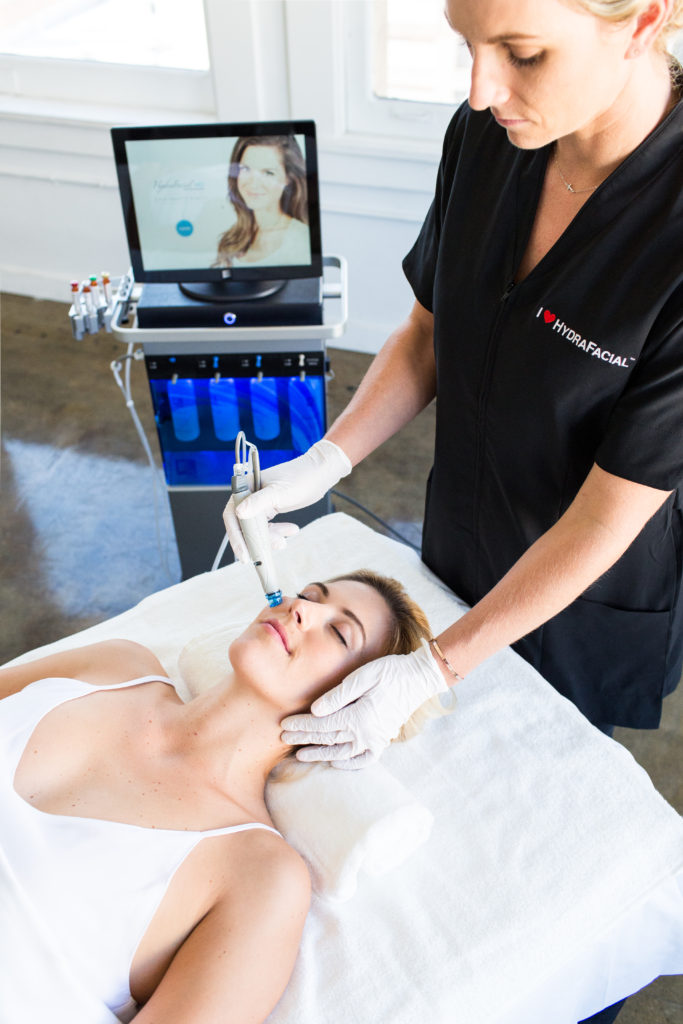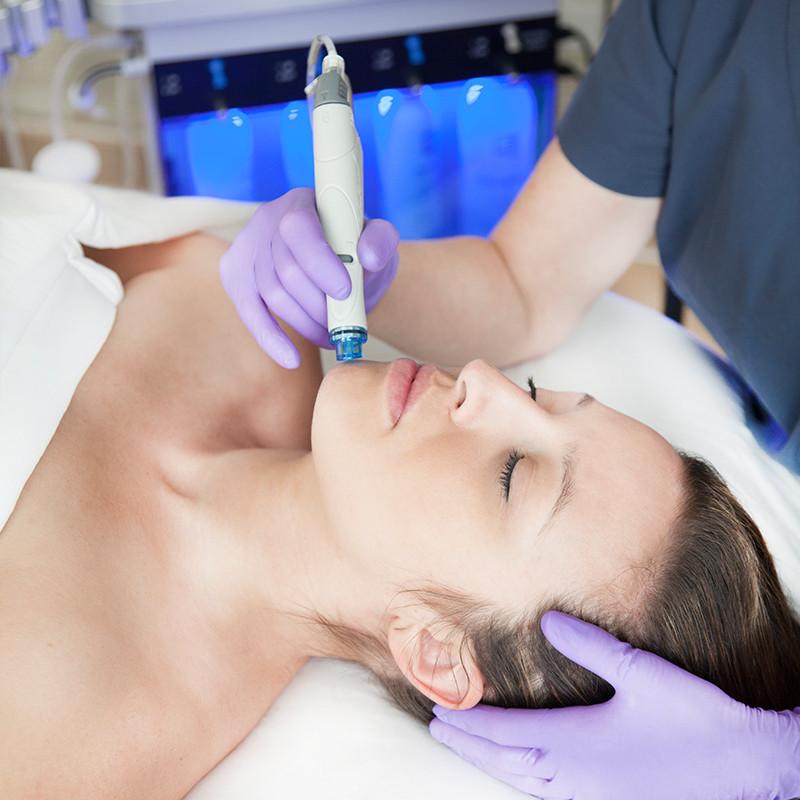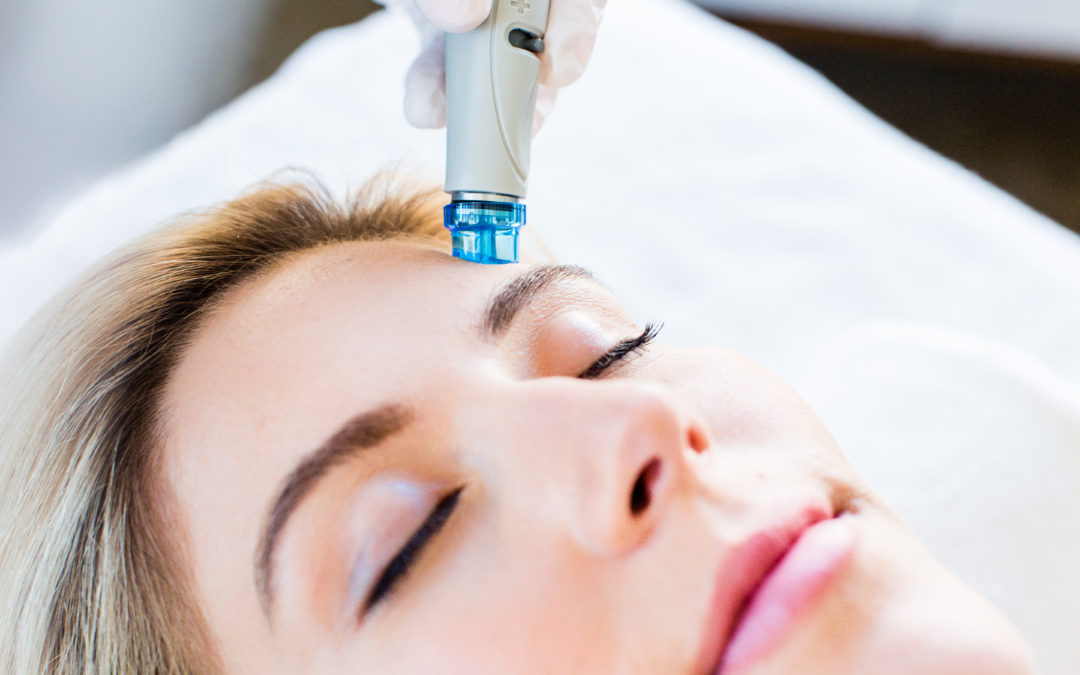In today’s fast-paced world, self-care has become a top priority for many individuals. This includes investing in professional spa treatments like the Hydrafacial, a multi-step skincare procedure that not only cleanses, exfoliates, and hydrates the skin, but also delivers antioxidants and peptides for a radiant complexion. However, once you’ve experienced the incredible results of a Hydrafacial, the next step is ensuring you maintain that glow. In this comprehensive guide, we will delve into the frequency of Hydrafacial treatments, as well as the essential post-treatment care to maximize the benefits of this transformative skincare regimen. Whether you’re a Hydrafacial enthusiast looking to fine-tune your maintenance routine or a newcomer eager to learn more, this guide will provide you with all the essential information needed to keep your skin looking its best.
Key Takeaways:
- Frequency is Key: It is important to maintain a regular treatment schedule, ideally every 4-6 weeks, for optimal results and skin health.
- Post-Treatment Care is Crucial: Following hydrafacial treatments, it is essential to protect the skin from sun exposure and to adhere to a proper skincare routine to prolong the benefits of the treatment.
- Consult with a Professional: To determine the ideal treatment frequency and personalized post-care routine, it is important to consult with a licensed skincare professional with expertise in hydrafacials.
Understanding Hydrafacial Treatments
If you are considering a hydrafacial treatment, it is important to understand the process and the benefits it can offer.
Definition and Benefits
On a basic level, a hydrafacial treatment is a non-invasive skincare procedure that uses patented technology to cleanse, extract, and hydrate the skin. This multi-step treatment is designed to improve the overall appearance of the skin, with benefits including a more radiant complexion, reduced fine lines and wrinkles, improved skin texture, and minimized pores.
Types of Hydrafacial Treatments
To cater to different skin concerns, there are various types of hydrafacial treatments available. These may include treatments specifically targeting acne, hyperpigmentation, sun damage, and aging skin. Any reputable skincare clinic offering hydrafacial treatments should be able to customize the treatment to address your specific skincare needs. Importantly, the information can be broken down into a table with 2 columns and 5 rows.
- Hydrafacial for Acne
- Hydrafacial for Hyperpigmentation
- Hydrafacial for Sun Damage
- Hydrafacial for Aging Skin
Treatments can also be tailored to address concerns such as uneven skin tone, dullness, and congested pores. It is important to consult with a skincare professional to determine the most suitable treatment for your skin. Any reputable skincare clinic offering hydrafacial treatments should be able to customize the treatment to address your specific skincare needs. Importantly, the information can be broken down into a table with 2 columns and 5 rows.
Pre-Treatment Considerations
It’s crucial to ensure that you are an ideal candidate and that you have properly prepared for the treatment to achieve the best results.
Factors Determining Suitability
Factors such as skin type, current skincare routine, and any existing skin conditions will play a significant role in determining the effectiveness of the Hydrafacial for your skin. Additionally, it’s important to consider any medical history or medications that may impact the outcome of the treatment.
- Skin type and condition
- Existing skincare routine
- Medical history and medications
The skincare professional will also assess your skin to determine the suitability of the treatment and provide recommendations based on their evaluation.
How to Prepare for a Hydrafacial
The preparation for a Hydrafacial begins with consulting a qualified skincare professional. They will provide specific instructions to help you prepare for the treatment. It’s essential to follow their guidance to ensure optimal results. The skincare professional may recommend adjusting your skincare routine or avoiding certain products to prepare your skin for the Hydrafacial.
Prepare for your Hydrafacial by following the skincare professional’s recommendations, which may include modifications to your skincare routine and avoiding specific products to ensure the best outcome.

Step-by-Step Breakdown of the Hydrafacial Process
On your visit to Luna’s Day Spa for a Hydrafacial treatment, you can expect a thorough and personalized process that targets your specific skincare needs. The step-by-step procedure includes the following:
| Cleansing and Exfoliation | Using a serum, the Hydrafacial device will gently exfoliate your skin, removing dead skin cells and uncovering the healthy skin underneath. |
| Extraction | During this step, the Hydrafacial device will remove debris from your pores, helping to improve skin congestion and reduce the appearance of blackheads and other impurities. |
| Hydration | The final step involves delivering nourishing serums to the skin, promoting hydration and providing long-lasting benefits. |
The Cleansing and Exfoliation Phase
Breakdown of the first phase of the Hydrafacial process involves gentle cleansing and exfoliation of the skin to remove impurities and dead skin cells, prepping the skin for the next steps in the treatment.
The Acid Peel and Extraction Phase
Acid peels are used to dissolve impurities and debris from the pores, followed by painless extraction to remove blackheads and other impurities from the skin.
Any residual impurities are gently lifted away, leaving the skin clean and refreshed.
The Hydration and Protection Phase
The final phase of the Hydrafacial process involves hydrating and protecting the skin with nourishing serums and antioxidants, leaving the skin with a healthy, radiant glow.
It is essential to protect the skin from sun exposure and maintain proper hydration to prolong the benefits of the Hydrafacial treatment.
Frequency of Hydrafacial Treatments
Not all skincare treatments are created equal, and the frequency of Hydrafacial treatments can vary based on individual skin needs. It’s important to understand the factors that influence treatment frequency and the recommended schedules for different skin types in order to effectively maintain the results of your Hydrafacial.
Factors Influencing Treatment Frequency
On your journey to maintaining healthy, glowing skin with Hydrafacial treatments, it’s essential to consider the following factors that can influence the frequency of your treatments:
- Skin type and condition
- Environmental factors
- Lifestyle choices
- Aging process
- Overall skincare goals
Any of these factors can impact how often you should receive Hydrafacial treatments, so it’s important to consult with a skincare professional to determine the best treatment frequency for your individual needs.
Recommended Schedules for Different Skin Types
For optimal results, the recommended schedules for Hydrafacial treatments can vary based on different skin types. Recognizing the unique needs of various skin types, here are the general guidelines for treatment frequency:
| Skin Type | Recommended Frequency |
|---|---|
| Oily/Acne-Prone | Every 2-3 weeks |
| Dry/Sensitive | Every 4 weeks |
| Normal/Combination | Every 4 weeks |
| Aging/Mature | Every 2-4 weeks |
| Skin Maintenance | Every 4-6 weeks |
Recognizing the specific needs of your skin type and adjusting the frequency of Hydrafacial treatments accordingly can help you achieve and maintain the best results. Factors such as environmental influences and lifestyle choices should also be considered when determining the optimal treatment schedule for your skin.
Post-Treatment Aftercare Tips
For those who have just undergone a Hydrafacial treatment, it is crucial to follow a strict post-treatment care routine to ensure the best results. Here are some essential post-treatment care tips to keep in mind:
- Keep your skin hydrated by drinking plenty of water
- Avoid direct sun exposure and use sunscreen
- Follow your dermatologist’s instructions for any prescribed post-treatment skincare products
After following these tips, you can expect your skin to continue looking radiant and healthy.
Immediate Aftercare Practices
One of the most crucial immediate aftercare practices after a Hydrafacial treatment is to avoid using any harsh skincare products or exfoliants. This will help your skin to heal and recover from the treatment. Additionally, it is essential to refrain from touching or picking at your skin to prevent any irritation or infection.
After the treatment, your skin may feel a bit sensitive, so it is important to be gentle with it. Avoid using makeup for the rest of the day, and let your skin breathe and rejuvenate.
Long-Term Skin Maintenance Tips
Tips for long-term skin maintenance after a Hydrafacial treatment include establishing a consistent skincare routine. Use gentle cleansers and moisturizers to keep your skin clean and hydrated. Additionally, incorporating regular exfoliation into your skincare routine can help maintain the results of your Hydrafacial treatment.
- Stay consistent with your skincare routine
- Protect your skin from sun damage by using sunscreen daily
- Consider scheduling regular Hydrafacial treatments to maintain your skin’s health and appearance
Thorough long-term maintenance of your skin is crucial to maximize the benefits of your Hydrafacial treatment.
Aftercare following a Hydrafacial treatment is essential to ensure the best results. It involves immediate aftercare practices such as avoiding harsh skincare products and refraining from touching your skin. Long-term skin maintenance tips include establishing a consistent skincare routine and protecting your skin from sun damage. By following these aftercare tips, you can maintain the health and radiance of your skin.
Weighing the Pros and Cons of Hydrafacials
To effectively weigh the pros and cons of hydrafacials, it is important to consider the benefits and potential drawbacks of this popular skincare treatment. By carefully evaluating both aspects, individuals can make informed decisions about whether hydrafacials are the right choice for their skincare regimen.
| Pros | Cons |
| Deeply cleanses and hydrates the skin | Possible redness or irritation immediately after treatment |
| Improves overall skin texture and tone | May not be suitable for individuals with certain skin conditions |
| Minimizes the appearance of fine lines and wrinkles | Requires ongoing maintenance for optimal results |
| Customizable to target specific skincare concerns | Cost may be prohibitive for some individuals |
| No downtime or recovery period | Potential for temporary breakouts as the skin purges impurities |

Advantages of Regular Hydrafacials
Weighing the benefits, regular hydrafacials offer a range of advantages for maintaining healthy, vibrant skin. By receiving these treatments on a consistent basis, individuals can ensure their skin remains deeply cleansed, hydrated, and rejuvenated. In addition, the customizable nature of hydrafacials allows for targeted improvements in skin texture, tone, and overall appearance, tailored to specific skincare needs.
Regular hydrafacials can also effectively minimize the appearance of fine lines and wrinkles, providing a more youthful and radiant complexion. By incorporating these treatments into a skincare routine, individuals can proactively address the effects of aging and environmental damage on their skin, promoting long-term skin health and vitality.
Potential Drawbacks and How to Mitigate Them
Hydrafacials certainly have the potential for some drawbacks, such as temporary redness or irritation immediately following the treatment, as well as the possibility of temporary breakouts as the skin purges impurities. However, these issues can be mitigated by following proper post-treatment care and utilizing gentle skincare products to soothe the skin. It is important to note that hydrafacials may not be suitable for individuals with certain skin conditions, and consultation with a skincare professional is recommended to determine the best course of action.
Prospective clients should also consider the ongoing maintenance required for optimal results, as well as the potential cost of regular hydrafacial treatments. By carefully weighing these factors and discussing them with a skincare specialist, individuals can make well-informed decisions about incorporating hydrafacials into their skincare routine.
Conclusion: Hydrafacial Maintenance 101 – From Frequency to Post-Treatment Care.
Consistency is key when it comes to maintaining the results achieved through hydrafacial treatments. Regular sessions, typically every 4-6 weeks, can ensure ongoing improvement of skin texture, tone, and overall appearance. It’s also important to follow post-treatment care guidelines, such as avoiding sun exposure and wearing sunscreen, to protect the skin and prolong the benefits of the hydrafacial.
In conclusion, hydrafacial maintenance requires a commitment to regular treatments and diligent post-treatment care. By following these guidelines, individuals can achieve and maintain healthy, radiant skin. With the right frequency and aftercare, hydrafacials can continue to provide long-lasting results for a smooth, glowing complexion.
Hydrafacial Frequently Asked Questions
Q: How often should I get a Hydrafacial treatment?
A: It is recommended to get a Hydrafacial treatment once a month to maintain optimal skin health and address any specific concerns. The monthly frequency allows for consistent exfoliation, cleansing, and hydration, resulting in long-term improvement of skin texture and appearance.
Q: Can I wear makeup immediately after a Hydrafacial treatment?
A: It is best to avoid applying makeup for the rest of the day following a Hydrafacial treatment. This allows your skin to fully absorb the serums and benefits of the treatment. Additionally, avoiding makeup for the first day minimizes the risk of clogging pores and ensures that your skin remains clean and free from irritation post-treatment.
Q: How should I care for my skin after a Hydrafacial treatment?
A: After a Hydrafacial treatment, it is important to maintain a gentle skincare routine. Avoid harsh exfoliants and aggressive treatments for at least a week post-treatment. Instead, focus on using mild cleansers, gentle moisturizers, and SPF to protect your newly rejuvenated skin. It is also recommended to drink plenty of water and avoid excessive sun exposure to maximize the benefits of your Hydrafacial.

Recent Comments